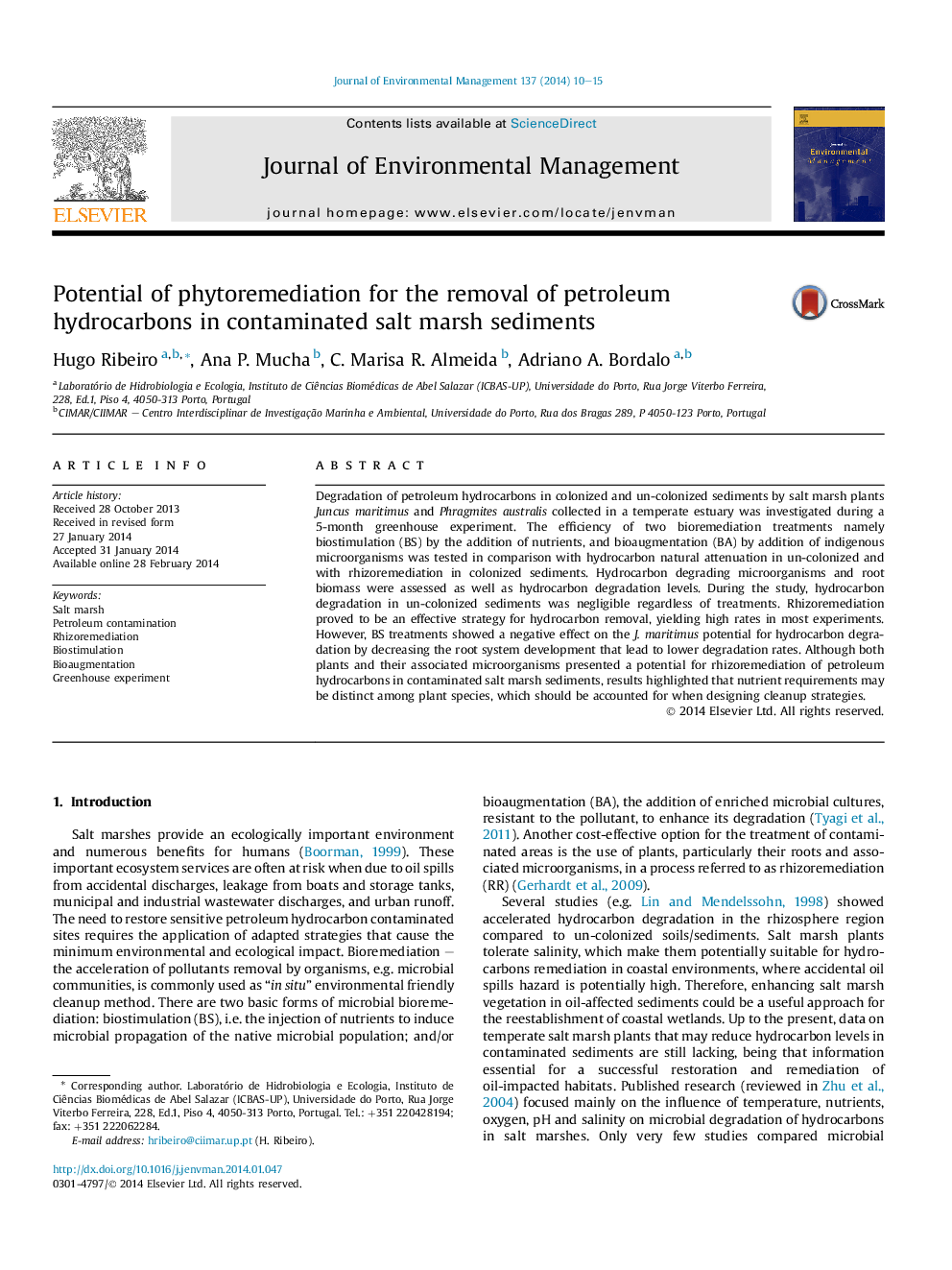| Article ID | Journal | Published Year | Pages | File Type |
|---|---|---|---|---|
| 1055721 | Journal of Environmental Management | 2014 | 6 Pages |
•Nutritional requirements for phytoremediation were specific for each plant.•Juncus maritimus and Phragmites australis showed an important role in hydrocarbon remediation.•Biostimulation and bioaugmentation did not enhanced hydrocarbon rhizoremediation.•Nutrient addition decreased J. maritimus potential for hydrocarbons degradation.•Root system development can influence hydrocarbon rhizoremediation.
Degradation of petroleum hydrocarbons in colonized and un-colonized sediments by salt marsh plants Juncus maritimus and Phragmites australis collected in a temperate estuary was investigated during a 5-month greenhouse experiment. The efficiency of two bioremediation treatments namely biostimulation (BS) by the addition of nutrients, and bioaugmentation (BA) by addition of indigenous microorganisms was tested in comparison with hydrocarbon natural attenuation in un-colonized and with rhizoremediation in colonized sediments. Hydrocarbon degrading microorganisms and root biomass were assessed as well as hydrocarbon degradation levels. During the study, hydrocarbon degradation in un-colonized sediments was negligible regardless of treatments. Rhizoremediation proved to be an effective strategy for hydrocarbon removal, yielding high rates in most experiments. However, BS treatments showed a negative effect on the J. maritimus potential for hydrocarbon degradation by decreasing the root system development that lead to lower degradation rates. Although both plants and their associated microorganisms presented a potential for rhizoremediation of petroleum hydrocarbons in contaminated salt marsh sediments, results highlighted that nutrient requirements may be distinct among plant species, which should be accounted for when designing cleanup strategies.
